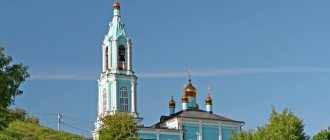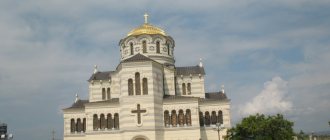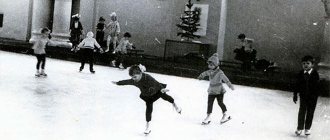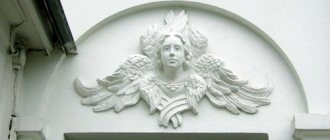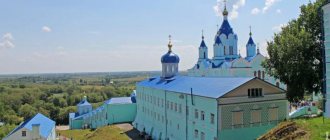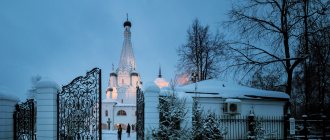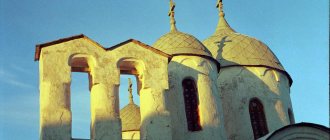Mir
Russia Rostov region Rostov-on-Don Cathedral of the Nativity of the Blessed Virgin Mary (Rostov-on-Don) Map is loading…
{"format":"leaflet","minzoom":false,"maxzoom":false,"limit":50,"offset":0,"link":"all","sort":[""], "order":[],"headers":"show","mainlabel":"","intro":"","outro":"","searchlabel":"\u2026 \u0441\u043b\u0435\ u0434\u0443\u044e\u0449\u0438\u0435 \u0440\u0435\u0437\u0443\u043b\u044c\u0442\u0430\u0442\u044b","default":"","import-annotation":false,"width ":"auto","height":"350px","centre":{"text":"","title":"""link":"""lat":47.21721999999999752617441117763519287109375,"lon": 39.711939999999998462953954003751277923583984375,"icon":""},"title":"","label":"","icon":"","lines":[],"polygons":[],"circles":[ ],"rectangles":[],"copycoords":false,"static":false,"zoom":8,"defzoom":14,"layers":["OpenStreetMap"],"image layers":[] ,"overlays":[],"resizable":false,"fullscreen":true,"scrollwheelzoom":true,"cluster":false,"clustermaxzoom":9,"clusterzoomonclick":true,"clustermaxradius":80, "clusterspiderfy":true,"geojson":"","clicktarget":"","showtitle":true,"hidenamespace":false,"template":"","userparam":"","activeicon": "","pagelabel":false,"ajaxcoordproperty":"","ajaxquery":"","locations":[{"text":"\u003Cb\u003E\u003Ca href=\"/palomnik/%D0% 9A%D0%B0%D1%84%D0%B5%D0%B4%D1%80%D0%B0%D0%BB%D1%8C%D0%BD%D1%8B%D0%B9_%D1%81% D0%BE%D0%B1%D0%BE%D1%80_%D0%A0%D0%BE%D0%B6%D0%B4%D0%B5%D1%81%D1%82%D0%B2%D0% B0_%D0%9F%D1%80%D0%B5%D1%81%D0%B2%D1%8F%D1%82%D0%BE%D0%B9_%D0%91%D0%BE%D0%B3% D0%BE%D1%80%D0%BE%D0%B4%D0%B8%D1%86%D1%8B_(%D0%A0%D0%BE%D1%81%D1%82%D0%BE%D0 %B2-%D0%BD%D0%B0-%D0%94%D0%BE%D0%BD%D1%83)\» title=\»\u041a\u0430\u0444\u0435\u0434\u0440\u0430\ u043b\u044c\u043d\u044b\u0439 \u0441\u043e\u0431\u043e\u0440 \u0420\u043e\u0436\u0434\u0435\u0441\u0442\u0432\u0430 \u041f\u 0440\u0435\u0441\u0432\u044f\ u0442\u043e\u0439 \u0411\u043e\u0433\u043e\u0440\u043e\u0434\u0438\u0446\u044b (\u0420\u043e\u0441\u0442\u043e\u0432-\u043d\u 0430-\u0414\u043e\u043d \u0443)\»\u003E\u041a\u0430\u0444\u0435\u0434\u0440\u0430\u043b\u044c\u043d\u044b\u0439 \u0441\u043e\u0431\u043e\u0440 \u04 20\u043e\u0436\u0434\ u0435\u0441\u0442\u0432\u0430 \u041f\u0440\u0435\u0441\u0432\u044f\u0442\u043e\u0439 \u0411\u043e\u0433\u043e\u0440\u043e\u0 434\u0438\u0446\u044b (\u0420 \u043e\u0441\u0442\u043e\u0432-\u043d\u0430-\u0414\u043e\u043d\u0443)\u003C/a\u003E\u003C/b\u003E\u003Chr /\u003E\u003Ca href=\"/ palomnik /%D0%A1%D0%B2%D0%BE%D0%B9%D1%81%D1%82%D0%B2%D0%BE:%D0%90%D0%BD%D0%BD%D0%BE %D1%82%D0%B0%D1%86%D0%B8%D1%8F\" title=\"\u0421\u0432\u043e\u0439\u0441\u0442\u0432\u043e:\u0410\u043d\u043d\ u043e\u0442\u0430\u0446\u0438\u044f\»\u003E\u0410\u043d\u043d\u043e\u0442\u0430\u0446\u0438\u044f\u003C/a\u003E: "'\u041a\u0 430\u0444\u0435 \u0434\u0440\u0430\u043b\u044c\u043d\u044b\u0439 \u0441\u043e\u0431\u043e\u0440 \u0432\u043e \u0438\u043c\u044f \u0420\u043 e\u0436\u0434\u0435\u0441\u0442 \u0432\u0430 \u041f\u0440\u0435\u0441\u0432\u044f\u0442\u043e\u0439 \u0411\u043e\u0433\u043e\u0440\u043e\u0434\u0438\u0446\ u044b"' \u2014 \u043a\u0430 \u0444\u0435\u0434\u0440\u0430\u043b\u044c\u043d\u044b\u0439 \u0441\u043e\u0431\u043e\u0440 \u0420\u043e\u0441\u0442\u043e\ u0432\u0441\u043a\u043e\u0439 \u0438 \u041d\u043e\u0432\u043e\u0447\u0435\u0440\u043a\u0430\u0441\u0441\u043a\u043e\u0439 \u0435\u043f\u0430\u0440\u0445\ u0438\u0438,\u043f\u0430\ u043c\u044f\u0442\u043d\u0438\u043a \u0430\u0440\u0445\u0438\u0442\u0435\u043a\u0442\u0443\u0440\u044b.","title":"\u041a\u0430\u0 444\u0435\ u0434\u0440\u0430\u043b\u044c\u043d\u044b\u0439 \u0441\u043e\u0431\u043e\u0440 \u0420\u043e\u0436\u0434\u0435\u0441\u0442\u0 432\u0430\u041f\u0440\u0435\ u0441\u0432\u044f\u0442\u043e\u0439 \u0411\u043e\u0433\u043e\u0440\u043e\u0434\u0438\u0446\u044b (\u0420\u043e\u0441\u0442\u0 43e\u0432-\u043d\u0430- \u0414\u043e\u043d\u0443)","link":"","lat":47.21721999999999752617441117763519287109375,"lon":39.71193999999999846295395400375127792 3583984375,"icon":""}],,"imageLayers":[]}
47.2172; 39.711976
Russia, Rostov-on-Don, Stanislavskogo street, 58
Rostov-on-Don, Rostov region 344002
Russia
Telephone
: 210-19-00
Cathedral of the Nativity of the Blessed Virgin Mary
- Cathedral of the Rostov and Novocherkassk diocese, an architectural monument.
History[edit]
The Rostov Cathedral of the Nativity of the Blessed Virgin Mary was built in just six years and consecrated on the Nativity of the Blessed Virgin Mary in 1860.
The history of the Rostov Cathedral is amazing, and inextricably linked with the history of the city itself. It originates from a fortress in honor of St. Demetrius of Rostov, established by the highest decree of Empress Elizabeth Petrovna in 1761 on the southern borders of Russia. During the construction of the fortress on the right bank of the Don, construction immediately began on a church in the name of the Intercession of the Mother of God and a chapel in the name of the Nativity of the Blessed Virgin Mary, which was consecrated in 1761.
Soon this chapel becomes a temple. In 1781, the wooden Church of the Nativity of the Virgin Mary was dismantled and moved to the city's market square, that is, to its current location. It did not last long - just over 10 years, and burned down in a fire. In 1795, God-fearing Rostovites built a new one on the site of the burnt church - stone, with wooden domes.
By the middle of the 19th century, the Church of the Nativity of the Virgin Mary on the market square could no longer accommodate the believing people. And then two Rostov merchants Semyon Koshkin and Fyodor Nefedov, with the consent of the City Duma and with the blessing of the ruling bishop, turned to the Holy Synod at the beginning of 1854 with a request for permission to build a large cathedral at the expense of their personal funds. They also asked to provide a corresponding architectural design for the future main temple of the city.
The answer with permission came from the Synod very quickly, and it was accompanied by a project designated as a standard one for the construction of Orthodox churches taking into account the new times. The author of the project was academician of architecture Konstantin Andreevich Ton.
Next to the cathedral, on its western side, a four-tier bell tower 75 meters high was erected. Its construction was financed by another Rostov merchant, P.R. Maksimov. The good news of its 10-ton bell was heard 42 versts along the Zadon region. The birthday of the bell tower of the Rostov Cathedral is for the celebration of the Kazan Icon of the Mother of God on November 4 (according to New Age).
In front of the cathedral, on its northern side, there was a spacious square where city holidays, parades, and folk festivals took place. A monument to Emperor Alexander II was erected in the middle of the square.
The decoration of the Rostov Cathedral were large marble porches, facing: from the north side - onto Cathedral Square, and from the south - onto the shopping area, from where the main entrance was located. From this side, the faithful people came to the cathedral, coming to services from neighboring villages, from Zadonye on various river vessels and fishing boats, and they ascended from the embankment of the Don River directly to the shopping square along Soborny Lane, and the street in front of the shopping square was called Rozhdestvenskaya, after named after the cathedral.
After the revolutionary events of 1917, terrible years of godlessness and persecution of the church began. The attack on the Rostov Cathedral began back in the 20s. Then the cathedral, together with the bell tower, was surrounded by a brick fence, and the marble porches were dismantled; the only entrance to the cathedral was allowed from the western side.
In 1929, workers removed the last icon in the cathedral.
From 1932 to 1942, the cathedral was completely closed, the crosses were removed from the domes, the iconostasis and all the interior decoration were lost. A grain warehouse was built inside the temple, and a menagerie was placed in the courtyard. Eyewitnesses said that the cage with the lioness in labor was placed in the temple so that she would not frighten the people with her roar, but she began to roar even more and rushed around the cage until she was taken out into the courtyard.
At the end of July 1942, believers themselves opened the cathedral. At the beginning of 1951, the main four-tiered iconostasis was installed, made in Moscow according to the design of the iconostasis of the Cathedral of Christ the Savior. It had an unusual shape - in the form of a chapel, topped with a dome with a cross. In 1955, the same iconostases were built in the right - Petro-Pavlovsky and left - Preobrazhensky aisles. The paintings of the walls, pylons and vaults were done by the artist K. Volkov.
A new page in the history of the Rostov Cathedral begins in the late 80s. For the 1000th anniversary of the Baptism of Rus', its five domes were covered with copper and gilded, and gilded crosses shone above them.
By 1999, the bell tower was completely restored. It was consecrated during a visit to the diocese by His Holiness Patriarch Alexy II of Moscow and All Rus'.
Background
At the end of the 18th century, after a large-scale resettlement of surrounding soldiers, townspeople and merchants to Soldatskaya Sloboda, it was decided to build the Church of the Nativity of the Blessed Virgin Mary in the same settlement, near the current Central Market (in those days the bazaar, and later the Old Bazaar). The temple was founded on February 20, 1781, and opened on September 5, 1781. Both the beginning of construction and the finished temple were consecrated by Archpriest John Andreev. However, on December 27, 1791, the temple burned down from a lightning strike.
The then mayor of the city, the merchant M.P. Naumov, petitioned Metropolitan Gabriel, the head of the Ekaterinoslav diocese, which at that time oversaw the territory of present-day Rostov, for the construction of a new church. And in 1795, in the same place, the Church of the Nativity of the Blessed Virgin Mary was built, having the status of a merchant. On its territory there is another, the so-called warm Church of the Three Saints. In 1822, by decree of the Holy Synod, the church became a cathedral church.
Current state[edit]
Description[edit]
The Cathedral of the Nativity is a five-domed stone church, shaped like a cross in plan, built in the Russian-Byzantine style. The three-tier iconostasis in the eastern part of the cathedral is designed in the form of a chapel, topped with a tent and dome.
In the courtyard of the cathedral there is also a small church of worship in the name of John the Baptist and the baptism of St. Nicholas; as well as a bell tower and several service buildings: the diocesan administration, the residence of the Bishop of the Rostov diocese, the office and diocesan departments and commissions; spiritual and educational center in the name of St. Demetrius, Metropolitan of Rostov, publishing house of the Rostov-on-Don diocese and printing house, shops of church utensils and spiritual literature.
Activities of the parish[edit]
At the temple there are:
- Sunday School
- Spiritual and educational center named after St. Dimitry of Rostov
- Great Bishop's Choir
- Sisterhood in the name of prmts. Elisaveta Romanova
- Sewing workshop “Donskaya Sacristy”
- Prosphornia
- Pilgrimage center
Contacts of the pilgrimage center:
344007 Russia, Rostov-on-Don, st. Stanislavsky, 58.
phone: +7 (863) 210 1905, 210 1906.
Schedule
: Monday-Friday: from 10-00 to 17-00; Saturday: from 10-00 to 15-00; break: from 14-00 to 15-00.
Story
Due to the rapid growth of the city’s population, in 1854 the project of a new stone church was approved by the highest order instead of the stone cathedral church with wooden domes that had fallen into disrepair.”
The cathedral was built in the period from 1854 to 1860 according to a standard design by the architect K. A. Ton and is externally similar to other churches built according to his designs: the Cathedral of Christ the Savior in Moscow and the Vvedensky Church of the Semenov Regiment in St. Petersburg, which have not survived to this day. Holy Spirit Cathedral in Petrozavodsk. The direct “landing” on the ground was carried out by the architect A. S. Kutepov.
The main trustee of the construction was the church elder Konstantin Mikhailov-Nefedov. At the expense of the hereditary honorary citizen of Rostov I.S. Panchenko, the walls of the cathedral were painted, icons were purchased, an expensive church fence was made and valuable crosses were installed on the domes.
In 1887, a four-tier bell tower was built (see section “Bell Tower”).
In 1937, the cathedral was closed, and a zoo was located on its territory, and subsequently warehouses. In the 40s of the 20th century, the upper tiers of the bell tower were destroyed.
The cathedral was reopened in 1942, under occupation. In 1950, the cathedral was renovated and the paintings were restored; in 1988, the interior of the temple was reconstructed. In 1999, for the 250th anniversary of the city of Rostov, the bell tower was restored to its original form.
New bells
For many years the gospel did not sound over the cathedral. The situation changed at the beginning of the new century, when new bells were made. This responsible task was assigned to the Voronezh MP "Vera".
The new bells are not exact copies of those whose ringing once called Orthodox residents of Rostov-on-Don to church. They were named in honor of the heavenly patrons of the secular and spiritual leaders of the region.
Today, the Cathedral of the Nativity of the Blessed Virgin Mary (Rostov-on-Don) notifies parishioners with the ringing of bells:
- Great Martyr Panteleimon weighing 4 tons;
- Saint Prince Vladimir (2 t);
- Archangel Michael (1 volume);
- Sergius of Radonezh (0.5 t);
- Nativity of the Blessed Virgin Mary (0.25 t).
Bell tower
In 1875, a bell tower was built on the western side of the cathedral. Its design was carried out by military architect-engineer A. A. Campioni with the participation of artist-architect D. V. Lebedev. Construction was carried out at the expense of merchants P.R. Maksimov and S.N. Koshkin, tobacco manufacturer and philanthropist V.I. Asmolov, and I.S. Panchenko, who had already become a church elder, and was completed in 1887.
The bell tower has a height of 75 m. Elements of classicism and renaissance were used in its design. The dome is blue and decorated with gilded stars. A four-dial clock with quarter strikes was installed in the upper tier. The middle tiers house the bells, the first of which were hung on October 15, 1887. The main bell, cast at the expense of I. S. Panchenko in Moscow at the N. D. Finlyandsky plant, weighing 1032 pounds (16.5 tons) was hung on October 22. This bell was decorated with four images: the Nativity of the Blessed Virgin Mary, the Great Martyr Panteleimon the Healer, the Iveron Icon of the Mother of God and the Holy Evangelist John the Theologian. It is believed that the ringing from the bell tower was heard 40 miles away.
In 1882, a small baptismal church was built on the first tier in the name of St. Nicholas, Archbishop of Myra in Lycia, wonderworker.
During the Great Patriotic War, fears arose that the bell tower could be used by the Germans as a reference point for artillery and aviation, and in July 1942, based on the decision of the regional committee of the All-Union Communist Party of Bolsheviks, the two upper tiers were blown up. And in 1949, the second tier was also dismantled.
The bell tower was restored in 1999. Architect Yu. N. Solnyshkin worked on the restoration project. New bells were manufactured at MP "Vera" (Voronezh). At the same time, the new bells differ from their predecessors in names and smaller sizes. Now they were named in honor of the heavenly patrons of the then spiritual and secular leaders of the region:
- bell of the Great Martyr Panteleimon the Healer; the weight of the bell is 4 tons, the name is associated with the former ruler of the diocese;
- bell of St. Equal-to-the-Apostles Prince Vladimir; the weight of the bell is 2 tons, the name is associated with the former governor;
- bell of the Archangel Michael; the weight of the bell is 1 ton, the name is associated with the mayor of Rostov;
- bell of St. Sergius of Radonezh; the weight of the bell is 0.5 tons, the name is associated with the former rector of the cathedral;
- bell of the Nativity of the Blessed Virgin Mary; bell weight 0.25 tons.
Despite the fact that the operation of the bell tower itself began in 1999, the restoration of the interiors of the first tier was completed only on December 4, 2011, when the chapel of St. Nicholas the Wonderworker was re-consecrated.
Statue of St. Demetrius on Cathedral Square
Cathedral Square
In front of the cathedral, between the streets. Stanislavsky and Moskovskaya, Cathedral Square is located, the history of which is inextricably linked with the history of the temple.
On April 17, 1890, a monument to Alexander II was erected there with the inscription on the pedestal: “Emperor Alexander II. Grateful citizens of Rostov-on-Don." The monument was erected according to the design of M. O. Mikeshin. The height of the monument was 10 m, and the weight of the bronze sculpture was 250 pounds (4 tons). In 1920, the monument was covered with a plywood box with a red star, and in 1924 it was demolished.
In 1999, approximately on the site of the demolished monument to the emperor, a monument to St. Demetrius of Rostov was erected. Authors: sculptor V. G. Belyakov and architect N. F. Gmyrya. The monument, at the insistence of the administration of Rostov-on-Don, was hastily erected during the celebration of the 250th anniversary of the city. This action caused mixed reviews. The monument was criticized for its low artistic level, poor location, inscriptions on it, and the vestments of the Saint. Many Rostovites - historians, art historians, architects, artists, journalists, local historians, writers and some parishioners - believe that the monument to St. Demetrius, Metropolitan of Rostov, should have been erected on the territory of the former fortress, for example, in Pervomaisky Park, or in the area of the street named after S Shaumyan, previously called Dimitrievskaya, named after the saint.

